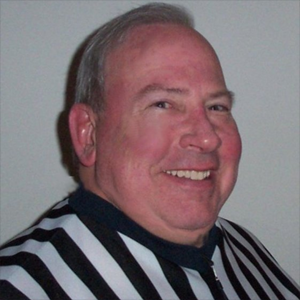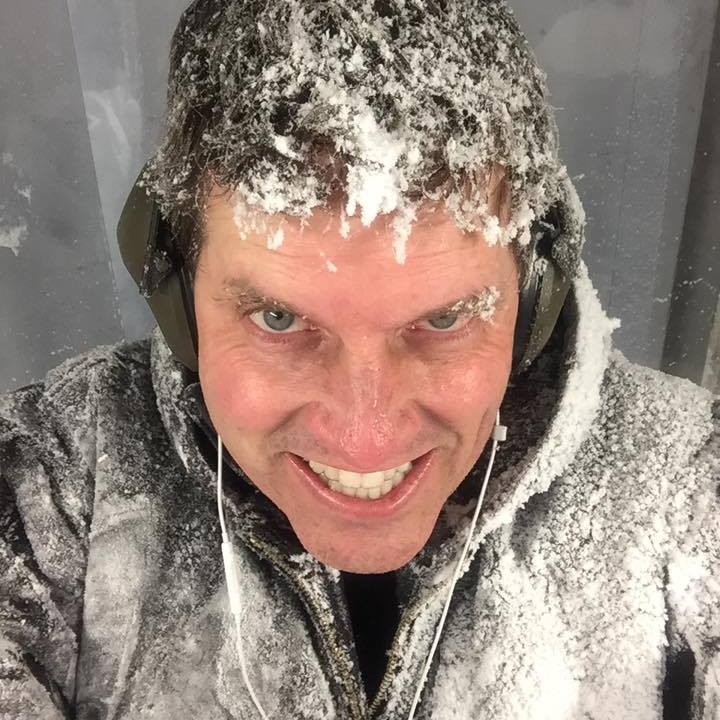
Rndballref
20 Years Experience
Chicago, IL
Male, 60
For twenty years I officiated high school, AAU and park district basketball games, retiring recently. For a few officiating is the focus of their occupation, while for most working as an umpire or basketball referee is an avocation. I started ref'ing to earn beer money during college, but it became a great way to stay connected to the best sports game in the universe. As a spinoff, I wrote a sports-thriller novel loosely based on my referee experiences titled, Advantage Disadvantage
The defender always has the rights to his vertical space whether he hits the ball or not. Based on how you describe it, I would see it as a good block, no foul.
seems reasonable...
Sounds like an over-sensitive ref who bullies when he is wrong. Look, all of us boot calls. As long as the ref is trying and not vindictive I can excuse blowing any call during a game. I have done my share, especially early on.
However, the ref's advancement into higher levels is dependent on NOT blowing key calls. The way a ref avoids blowing a call is to be prepared and understand the rule book better than anyone else in the gym, having played or watched enough games to morph experience into good judgement, and to understand the mechanics of officiating so that you position yourself correctly to have the best possible angle to see the action.
Having said all of that I would caution you (or any parent) from becoming the overindulgent father or mother who takes on evaluating officials when you have no training or understanding what is involved. You should let your school's coaches take on the responsibility of giving feedback to the officials and the assignment chairperson who evaluates referees and books officials. If you don't, and I have seen this a hundred times, you will alienate yourself from the other parents, and you will lose credibility with your daughter's coach ahead of when you really have an issue. If you are too vocal, it may hurt the way your coach views your daughter. As a coach once told me, "you pick the player, you pick the parent."
Just to punctuate the point, I also umpired baseball games in Illinois - high school, house and traveling leagues. I can honestly say that it took me three years to settle in on a consistent correct strike zone. It just takes experience. So in my first year, my strike zone was inconsistent. During that time I was not put on Varsity games. So in middle school and even freshman games expect spotty officiating.
Unfortunately, the best officials referee Varsity games, and in some ways the best ref's are needed at the lower levels. You may be seeing young inexperienced ref's or lazy guys just picking up checks. If your daughter advances you will see better officiating.
Free advice is sometimes worth what you paid for it … so here it is. Cool down during her games or don't attend if you cannot help yourself. You are going to ruin the experience for your daughter.
The placement of a throw in after a time out is the same as the placement after a violation or a non-shooting foul. The spot should be perpendiclar to nearest sideline oe endline. So imagine a diagonal line from the elbow of the free throw line to the corner of the sideline/endline. If the ball was on the sideline area of that line then find a perpendicular line to the sideline. If it is on the other side of the diagonal then the ball goes to the endline. If the ball was in the paint, then it is taken out on the endline at the closest line of the paint - never on the endline directly under the basket.
Videogame Reviewer
 Pick one: Nintendo Ice Hockey, NHL ‘94, or Blades of Steel?
Pick one: Nintendo Ice Hockey, NHL ‘94, or Blades of Steel?
Ice Sculptor
 What was the raciest sculpture you ever made?
What was the raciest sculpture you ever made?
Auto Mechanic
 Are mechanics more likely to take advantage of female customers than males?
Are mechanics more likely to take advantage of female customers than males?
Technically all players have to be beckoned in by a referee. As a matter of practice, I would not call the T unless the player's entry gave them a distinct advantage such as an undefended fast break.
If the player had two hands on the ball and pushed it to the ground it is double dribble. If the play had one hand on top of the ball and pushed it to the ground it would be a dribble. If he then picked the ball up, he could not dribble again.
Normally, contact after a blocked shot would be considered incidental. So unless the contact is intentional or extremely harsh I would let it go.
-OR-
 Login with Facebook
Login with Facebook (max 20 characters - letters, numbers, and underscores only. Note that your username is private, and you have the option to choose an alias when asking questions or hosting a Q&A.)
(A valid e-mail address is required. Your e-mail will not be shared with anyone.)
(min 5 characters)
By checking this box, you acknowledge that you have read and agree to Jobstr.com’s Terms and Privacy Policy.
-OR-
 Register with Facebook
Register with Facebook(Don't worry: you'll be able to choose an alias when asking questions or hosting a Q&A.)